#Emma von Enck
Explore tagged Tumblr posts
Text

Joseph Gordon and Emma von Enck in Balanchine's Rubies, from Jewels.
Photo: Erin Baiano
#Balanchine#Rubies#Rubies ballet#NYCB#New York City Ballet#Erin Baiano#Emma von Enck#Joseph Gordon#Jewels ballet#Jewels
9 notes
·
View notes
Text
Emma Von Enck and Victor Abreu
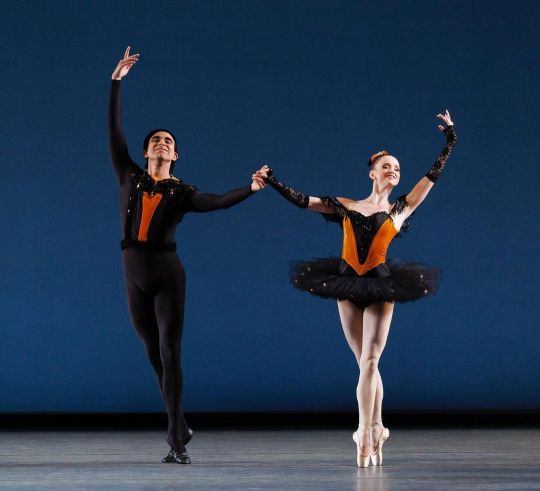
Emma Von Enck and Víctor Abreu, “Bourrée Fantasque”, choreo by George Balanchine, music by Emmanuel Chabrier [“Marche Joyeuse”, “Bourrée Fantasque”, “Prélude” (from the opera Gwendoline) and “Féte Polonaise” (from the comic opera Le Roi Malgré Lui)], costume by Barbara Karinska (Varvara Jmoudsky), New York City Ballet, David H. Koch Theater, Lincoln Center, New York City, USA.
Note: Original quality of photographs might be affected by compression algorithm of the website where they are hosted.
Source and more info at: Photographer Erin Baiano Website Photographer Erin Baiano on Tumblr Photographer Erin Baiano on Instagram
via Emma Von Enck on Instagram
#Dans#Danse#Dance#Danza#Dancer#Dansen#Balet#Ballet#Балет#Ballett#Balletto#Balerino#Balerina#Ballerina#Ballerino#Bailarina#Балерина#Танец#Tänzer#Танцор#Barbara Karinska (Varvara Jmoudsky)#Bourrée Fantasque#David H. Koch Theater#Emma Von Enck#Emmanuel Chabrier#Erin Baiano#Féte Polonaise#George Balanchine#Lincoln Center for the Performing Arts#Marche Joyeuse
3 notes
·
View notes
Text
I’m in NYC for work, so of course I got a ticket to see NYCB! Rubies; Dig the Say & In Creases by Justin Peck; & Underneath, There is Light by Amy Hall Garner — a new work for this season.
Rubies! It was my first time seeing this live. I have yet to see Jewels in its entirely and it’s on my bucket list, but I was so thankful so have seen this with Emma von Enck, Joseph Gordon, and Emily Kikta.
Also, Tiler Peck and Roman Mejia in Dig the Say! Just incredible!
A few photos from curtain calls, and a shot of the chandelier because it’s exquisite! 💎
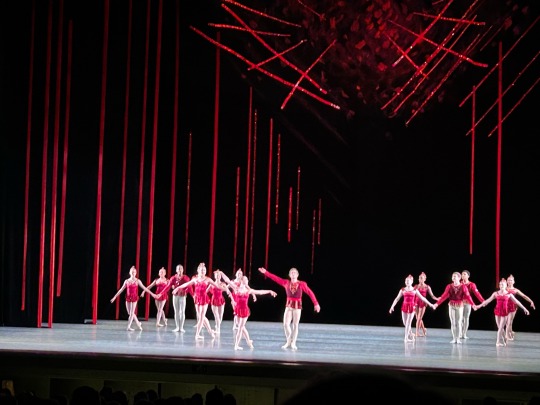
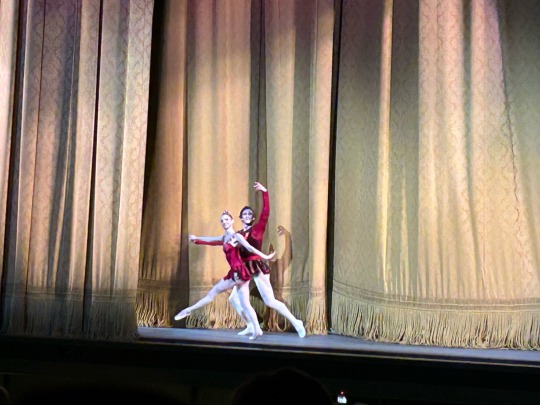
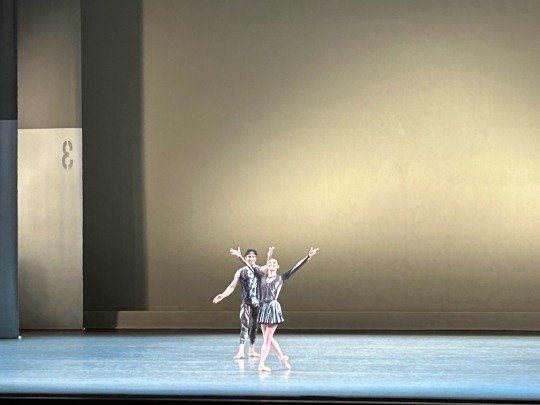
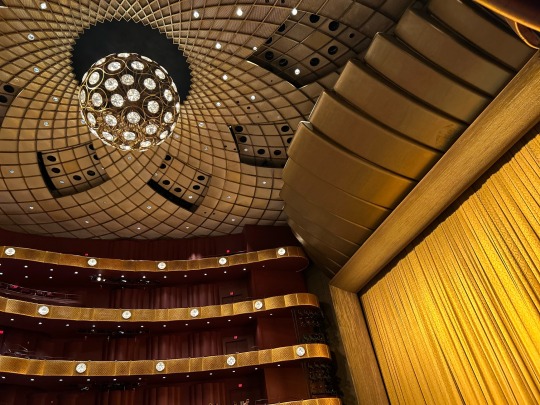
8 notes
·
View notes
Text








Megan Fairchild // India Bradley, Unity Phelan, and Emma Von Enck David Gabriel and Cainan Weber // Ashley Laracey India Bradley // Emma Von Enck Emily Kikta // Harrison Coll and David Gabriel
New York City Ballet by Elizaveta Porodina part 1 // part 2 // part 3
12 notes
·
View notes
Text
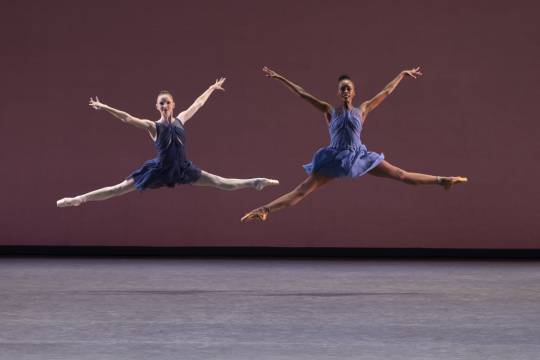


Emma von Enck, India Bradley, Roman Mejia, Mira Nadon, and Chun Wai Chan in Tiler Peck's Concerto for Two Pianos (New York City Ballet, 2024)
Photos by Erin Baiano
17 notes
·
View notes
Photo

Emma von Enck in La Source (NYCB, 2020)
76 notes
·
View notes
Text
Balanchine Turns 116 This Week. His Ballets Never Get Old.
Yes, it’s cold outside. It’s dark. You could just stay at home with a streaming service — I get that, I really do — but there is another option: New York City Ballet’s winter season is like a rare tonic that Gwyneth Paltrow would sell on Goop if she could.
There’s something almost dismaying, in a wonderful way, about being a part of the audience experiencing City Ballet’s melding of music and dance at this time of year. It fills a void.
The season, which opened Tuesday at the David H. Koch Theater at Lincoln Center, began with two lovely, concise programs by George Balanchine, who created the company with Lincoln Kirstein and whose ballets rarely cease to astonish even though he’s no longer around. On Wednesday — what would have been his 116th birthday — there was a special charge in the air for a laudable triple bill starting with the sparkling “Allegro Brillante,” set to Tchaikovsky. Balanchine once said, it “contains everything I know about the classical ballet — in 13 minutes.”
Featuring Tiler Peck and Tyler Angle, whose warmth for each other gives the stage a soothing glow, it made for a radiant 13 minutes. The ballet was also an important test for Ms. Peck, returning from an injury; full of turns that end on a dime and agile footwork, it’s hardly easy, but her instinctual performance was about more than perseverance. There is, at times, a new expansiveness to her upper body and a lusciousness to her arms: a signal of what is to come.
The program also welcomed the return of “La Source,” a ballet set to Delibes that pays homage to the French tradition. With its woodland vibe, it was incandescent. Emma Von Enck, making her debut as the female soloist — she dances with eight women — possessed a winning combination of verve and refinement, allowing for flourish in the curves of her arms, all the way to her delicate fingers that played the air like an instrument.
But Megan Fairchild, in the female lead, was the true marvel; never pictorial, she remained in perpetual, elegant motion. Dancing with Gonzalo Garcia, Ms. Fairchild floated through the classical choreography with the kind of freedom that made her performance modern, a sense of swing within its virtuoso grace. She’s straightforward, yet lush; technically impeccable, but never boring. Her coordination is mesmerizing, as is her ability to switch from soft to sharp, which makes her steps, as controlled as they are, altogether intuitive. She had a baby recently, and she came back to the stage even stronger.
Teresa Reichlen danced with a similar authority — like Ms. Fairchild, she performs with large-scale openness and quiet power — on Tuesday. She was astonishing in “Monumentum pro Gesualdo” and “Movements for Piano and Orchestra,” two Stravinsky ballets created separately but shown as a pair with a pause in between. Regal and deliberate, Ms. Reichlen etched these modernist works with her entire body, not just the parts we could see; freezing and freeing time, she moved seamlessly within the angles of Balanchine’s austere choreography, making the ballets as much a movement meditation as a dance.
A less penetrating ballet also returned to the repertory on Tuesday: “Danses Concertantes,” which Balanchine originally choreographed for Ballet Russe de Monte-Carlo in 1944 and revisited for City Ballet’s 1972 Stravinsky Festival. Any Balanchine ballet is worth watching, but this one, for all its youthful brio, never really coalesces. It’s feels more in the style of Balanchine, deviating from his usual, extraordinary musicality. There are recognizable elements — flexed feet, cocked hips, formations of dancers that tangle and untangle — but for all of its color, courtesy of Eugene Berman’s vibrant scenery and costumes, it’s a little dull.
In a sneaky way, it proved which dancers had the coordination to give it some dancing sense: Mira Nadon, Nieve Corrigan, Davide Riccardo and Jonathan Fahoury lent finesse to the repetitive, sometimes knotty steps. While Harrison Ball, the male lead and in the role for the first time, held his own, there were strained moments: His partner, Erica Pereira, smiled brightly (as she often does) but was less capable of displaying a robust breadth of movement. The frequency of her casting is a mystery; this was a debut, and there are more to come.
The closing ballets on both nights had much to offer. On Tuesday, “Stravinsky Violin Concerto” showcased two all-star pairs as leads: Lauren Lovette with Joseph Gordon, and Sara Mearns with Adrian Danchig-Waring. This ballet has it all, from the joyful community of the group to its spiritual, ethereal duets. Two corps de ballet members didn’t make it to the finale (the cause was a minor injury), but its principal couples, dancing with imagination and heart, made it sing — in particular, Mr. Gordon, who has a lush way of seeming to discover steps in real time.
On Wednesday the final work was a story ballet: “Firebird,” a vintage gem from 1949 with Marc Chagall scenery and costumes; and choreography both by Balanchine and Jerome Robbins. Andrew Veyette, a veteran company member, made his debut as Prince Ivan, with Ashley Bouder, who was fiercely vivid and glitteringly raw in the title role.
They’ve danced together for years, but the expressiveness of their performance brought out something new. Was it the enchantment of the story? Their way of embracing the magic of the stage? They gave this Russian fairy-tale both intensity and importance.
It’s opulent, too — a fitting way to bring the curtain down on Balanchine’s birthday. That evening, in a sweet, conversational preperformance talk, Mr. Veyette, with Ms. Lovette, spoke about the what it means to dance Balanchine’s ballets. “The best way I can describe it,” he said, “is it’s like you’re learning a song somehow you already knew.”
Like a visceral act, that’s the sensation of watching them, too. Aren’t Balanchine ballets like the best songs? They get better the more you play them. So play them.
from WordPress https://mastcomm.com/entertainment/balanchine-turns-116-this-week-his-ballets-never-get-old/
0 notes
Text

Emma von Enck and Sebastian Villarini-Velez in Balanchine's Tarantella.
Photo: Erin Baiano
#Balanchine#Tarantella#Erin Baiano#New York City Ballet#NYCB#Emma von Enck#Sebastian Villarini-Velez#ballet#pas de deux
7 notes
·
View notes
Text
Emma Von Enck, Emily Kikta, Victor Abreu and Román Mejía

Emma Von Enck, Emily Kikta, Víctor Abreu and Román Mejía, “Bourrée Fantasque”, choreo by George Balanchine, music by Emmanuel Chabrier [“Marche Joyeuse”, “Bourrée Fantasque”, “Prélude” (from the opera Gwendoline) and “Féte Polonaise” (from the comic opera Le Roi Malgré Lui)], costume by Barbara Karinska (Varvara Jmoudsky), New York City Ballet, David H. Koch Theater, Lincoln Center, New York City, USA.
Note: Original quality of photographs might be affected by compression algorithm of the website where they are hosted.
Source and more info at: Photographer Erin Baiano Website Photographer Erin Baiano on Tumblr Photographer Erin Baiano on Instagram
via Emma Von Enck on Instagram
#Barbara Karinska (Varvara Jmoudsky)#Bourrée Fantasque#David H. Koch Theater#Emily Kikta#Emma Von Enck#Emmanuel Chabrier#Erin Baiano#Féte Polonaise#George Balanchine#Lincoln Center for the Performing Arts#Marche Joyeuse#New York City Ballet#Prelude#Román Mejía#Víctor Abreu#Dans#Danse#Dance#Danza#Dancer#Dansen#Balet#Ballet#Балет#Ballett#Balletto#Balerino#Balerina#Ballerina#Ballerino
2 notes
·
View notes
Text
Interview with Emma von Enck
This is from the Kennedy Center's blog. All photos are by Erin Baiano via the Kennedy Center.
By Brittany Laeger
The stages of the Opera House have extra sparkle this week with the opening of New York City Ballet in Jewels, one of George Balanchine’s iconic works. In between rehearsals and company ballet classes, we caught up with Principal Dancer Emma Von Enck to chat about why she thinks Jewels is timeless, the ever fascinating question of what’s in one’s dance bag, favorite recipe, and more.
Emma hails from Cleveland, Ohio and began dancing when she was five with enrolling as a full-time student at SAB (School of American Ballet) in 2012. She joined NYCB in 2016 and was recently promoted to Principal in May 2024. Read on to get to know her better!

Did dance find you or did you find dance?
I guess you could say that dance found me. I have two older sisters who do ballet, and I remember specifically picking gymnastics, because I wanted to be different. But it only took my seeing one or two of my sisters’ shows to realize, Actually, I want to do that. I begged my mom to put me in dance. I couldn’t wait until I was old enough to perform like they did.
Congrats on your recent promotion to Principal Dancer! You'll be performing as the lead in "Rubies" during the KC run—what's surprised you in the rehearsal process as you have worked on learning this role?
The first time I debuted this role was last fall, and every rehearsal has been so fun. With your partner, you have to discuss what works because the partnering is different than classical ballet—it's more angular, leaning off balance and catching each other at the last second. And it took a second to digest some of the counts. The corps in the Rubies, which I did previously, is actually much harder to count than the principal part. Now, it's almost like breathing, I don't even think about it. And paired with the choreography—Balanchine and Stravinsky is just the perfect partnership, it feels so natural.
As you prepare for these Kennedy Center performances, what do you think makes Jewels timeless?
It's such a beautiful full-length that's so different from many of the traditional classical ballets. Each Jewel has its own specific flair and inspiration. When I first got into the company, the second ballet I ever performed was Emeralds. I love the music—it's so grand and the opening has you weaving in and out of different patterns shaped like a jewel, framing the other dancers. And then I moved to Diamonds, which I adore. The finale gives me chills every single time. And then I moved to the corps of Rubies. It is full circle to get to do the lead—I remember being at the School of American Ballet and watching Rubies and specifically thinking, Oh my gosh I want to do that so bad.

Dancers amass a lot of stuff in their dance bags—what's the number one thing you can';t live without?
Pointe shoes. I cart around far too many pointe shoes because I spread them out to make them last longer—5 to 6 pairs of pointe shoes take up a lot of space. I can't be without a water bottle. I always have snacks, especially for long rehearsal days.
Certain items are staples for when I’m about to perform—a Theraband is essential, always do the foot exercises. Deflated balls for ab series. Cliff chews—I choose the non-caffeinated because I'm very sensitive to caffeine, and the adrenaline is enough!
What's your go-to karaoke song/favorite song to sing in the shower?
"Paper Planes" by M.I.A. because you don't really have to carry a tune—and it's classic, everyone knows it, it's a bop. And then in the shower, it really depends—pop, folk, classical are all on the playlist. Sometimes, if they have scores that I love, I will put the ballets I'm doing that season into rotation.
Go-to recipe?
I try to implement one new recipe each month. Tortellini soup has been a new go-to—I make a large quantity that I can spread out through leftovers. I usually have a sandwich every single day. I'm a huge smoothie person—after barre, it's the first thing I crave, especially if I'm going right into another rehearsal. My current recipe is spinach, cucumber, pineapple, mango, ginger, lemon juice, water, and cashews if I really need protein.
With the upcoming 2024 Paris Summer Olympics, we have to ask—if you were competing, what's your sport of choice?
I love swimming, although I couldn't hold a candle to anyone actually competing. Gymnastics is so fun to watch, but I have a heart attack every time they do the balance beam. It's super stressful. But they are such professionals who train their whole lives for it—I'm sure it's similar to when people ask, "How do you do a pirouette?"
Is there anything that you do backstage pre-performance that's unique/notable?
I put my pointe shoes on before my costume to let my feet acclimate to the shoes. I try to give myself until the last second to see if I've chosen the right ones, before sewing in, which is where you tuck your ribbons in and sew them down—you would hate for your ribbons to come undone onstage.

What's the craziest thing that's happened to you during a performance?
I remember coming onstage for a pas de deux once and the music was supposed to switch—and it didn't. This happens, the scores are so complicated and instruments come in and out. And I just looked at my partner Jovani and he didn't miss a beat. And we just plowed on pretending as if we were dancing to our normal music. It's strange to turn off your brain in that way because you're so used to listening for the music, but honestly, your body will sink into the muscle memory. And most of the time the orchestra will pick it up. It's unexpected but it's show business, sometimes that's how it goes!
Dancing runs in your family as your two sisters also dance professionally, what has been a favorite memory you have from supporting each other on- or -off stage?
With the frequency that we perform, there are always those shows that just don't feel as good. And I remember recently after a performance, I just felt it wasn't my best—most people wouldn't be able to tell, but I know myself—and I was feeling really upset. And I remember calling my oldest sister, who is a Principal at Texas Ballet Theater, and asking her, "How do you get over bad performances? I just don't know how to move on." And she gave me advice that I think about a lot. She said, "Time—you have to put in several other good shows for the sting of the memory of it not going so well to fade." And that was reassuring. Perfectionism can be a good thing at some level, because that's what keeps you pursuing excellence. But it can be destructive and upsetting when you feel like you didn't live up to that standard. So her giving me that advice soothed the stress of it.
I love ballet and I have had to make it my own, but it is so tethered to my family, my sisters specifically. My sister Claire and I lived together when I first got into the Company, but she was very respectful of letting me find my own way and I was so thankful to have that support. My sisters, we each have our own journey and specific relationship with ballet, but I've been so grateful to have that communal understanding.
And…bonus question as we also would like to congratulate you on graduating from Fordham University recently! What was your favorite class within your studies?
For my English major, I took a Jane Austen in Context class, which was one of my favorites—with Professor Greenfield, she was amazing. I also loved my Virginia Woolf class—I wasn't even supposed to be able to take it because it met on Wednesdays in the middle of the day, when we have rehearsals. I reached out to this professor explaining that I would most likely not be able to make 50% of the classes. But she was so accommodating, and she let me take the class anyway. I wrote all the essays and made it when I could.
#Emma von Enck#New York City Ballet#NYCB#Jewels ballet#Rubies ballet#interview#dancer#Kennedy Center#Balanchine
1 note
·
View note
Text

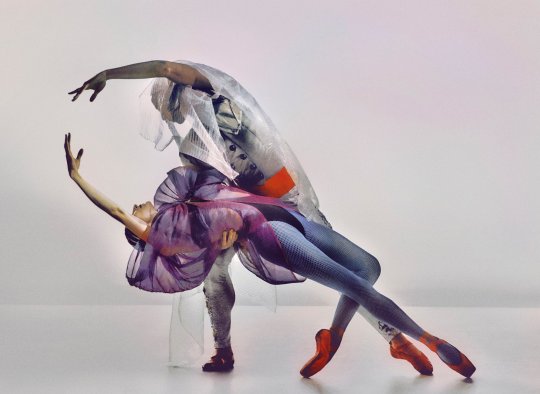




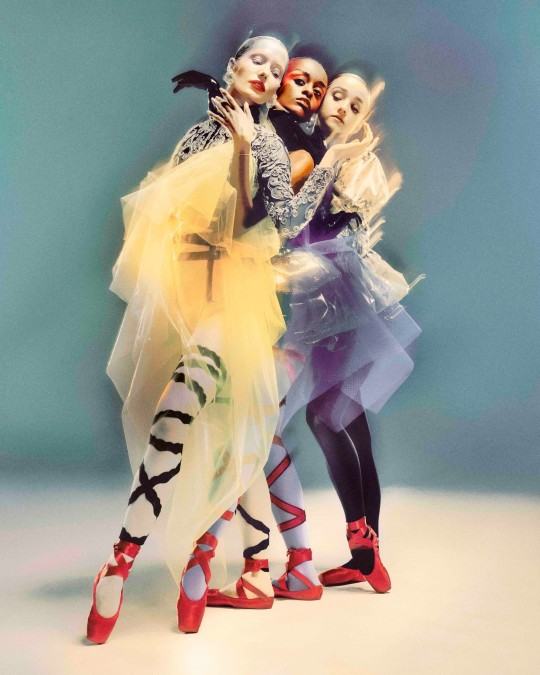

Cainan Weber // Ashley Laracey and Joseph Gordon Joseph Gordon, Peter Walker, and Gilbert Bolden III // Joseph Gordon Gilbert Bolden III // Unity Phelan Unity Phelan, India Bradley, and Emma Von Enck // Olivia Bell
New York City Ballet by Elizaveta Porodina part 1 // part 2 // part 3
5 notes
·
View notes
Text








Gilbert Bolden III // Unity Phelan India Bradley, Unity Phelan, and Emma Von Enck // Emily Kikta Unity Phelan // Emma Von Enck Megan Fairchild // Silhouettes
New York City Ballet by Elizaveta Porodina part 1 // part 2 // part 3
6 notes
·
View notes
Text
Nutcracker Season!
Nutcracker season can elicit an array of feelings. Some love it, some hate it. I was falling into the indifferent category. I don't live in a major city, so the month long onslaught of ballet school-civic rep level productions has me a bit bummed out…and ready to tune it all out. AND THEN…I stumbled upon this very interesting panel discussion lead by ballet critic, Alastair McCauley, comparing the original Lev Ivanov Sugarplum PDD to the Balanchine version, getting into the nitty gritty of the score and the choreographic language that can be found in both versions, pointing out the various ways in which Balanchine quoted Ivanov. This is so interesting and only available online until Dec. 17, so hurry and watch it while you can. Who knew about the original version of the Sugar Plum sliding across the stage on point on a hidden stage tracking device?! If you do anything, watch this first video with the panel talk and demonstrations. The videos I included after that are just if you want to get obsessive like I did to dig deeper. Panelists: Suki Schorer, Wendy Whelan, Sara Mearns, Jonathan Stafford. (Watching Suki coach is worth watching!) NYCB Dancers: Chun Wai Chan, Ashley Hod (Balanchine version) & Anthony Huxley, Emma Von Enck (Ivanov Version)
MacCauley mentions the Fonteyn version a few times during this talk, so I found it for you. The tempo is certainly much faster, and it really makes you appreciate Fonteyn's speed! But I actually prefer the slower tempo, which allows the music to really soar. But I also wondered if it was the audio quality of this historic recording is simply too compressed and tinny to do it justice.
youtube
The Mariinsky dances the Vasily Vaionen version of the Nutcracker, and I wanted to see how it compared to the Ivanov version. I really love the Mariinsky version. It's a departure from Ivanov, but still very classical and regal. PPD below with Baby Shakirova.
youtube
BONUS: If you want to watch the full Mariinsky Nutcracker, here's a 1994 recording with Larissa Lezhnina and Victor Baranov. And for some real fun going down the rabbit hole, this is an amazing Soviet black and white recording of the PDD with the late Svetlana Efremova (SHE IS AMAZING!) and Sergei Vikulov. Notice that the extra four cavaliers are not in this one, so the choreography is adjusted. I have a thing for soviet era black-and-white ballet films. Not to be overlooked, the Grigorivich version at the Bolshoi is worth mentioning. There are a few things that stood out to me. Its religiosity, for one. The PDD essentially starts with Masha and her prince praying together as if at a mass. And then, towards the end, are the huge lifts that end with an upside down ballerina (not my favorite pose…)
Interestingly, ABT's version by Ratmansky also incorporates the same big lift, but transitions into a spin. You can see it here, and it's a much smoother transition. Ignore the weird speed manipulation in this video. It can give you motion sickness.
AND….I found this POB version. The Nureyev choreography is horrible and Tsikaridze knows it. He can barely hold back his own laughter as how bad this performance is. When I watched this, my first thought is that Nureyev must have been a misogynist because the Sugar Plum/Clara choreography is so god awful that it seems like he's trying to humiliate ballerinas. Poor Myriam Ould-Braham, she does her best to dignify the choreography with her impeccable technique, but there is no saving this. Another thing that bothers me is that the couple are hardly dancing together, it's like a bad ballet class where they dance side to side. I hope this version soon disappears forever. Watch at your own risk. It made my blood boil.
youtube
Okay, that's it for a while. I may go see the Houston Ballet's Nutcracker if I have time. But I will mostly be focused on taking time off with the family, puttering in the garden, and catching up on my ever-expanding to-do list. Wishing everyone a wonderful holiday season!
#ballet#prima ballerina#nutcracker#deep dive#nycb#NYC Ballet#Alastair MacCauley#Bailet history#Lev Ivanov#sugar plum fairy#mariinsky ballet#Bolshoi#margot fonteyn#royal ballet#ABT#Ratmansky#grigorivich#Soviet ballet film#russian ballet#Nutcracker Season is here#rudolf nureyev#great dancer terrible choreographer#time for the hot toddies#Youtube
17 notes
·
View notes